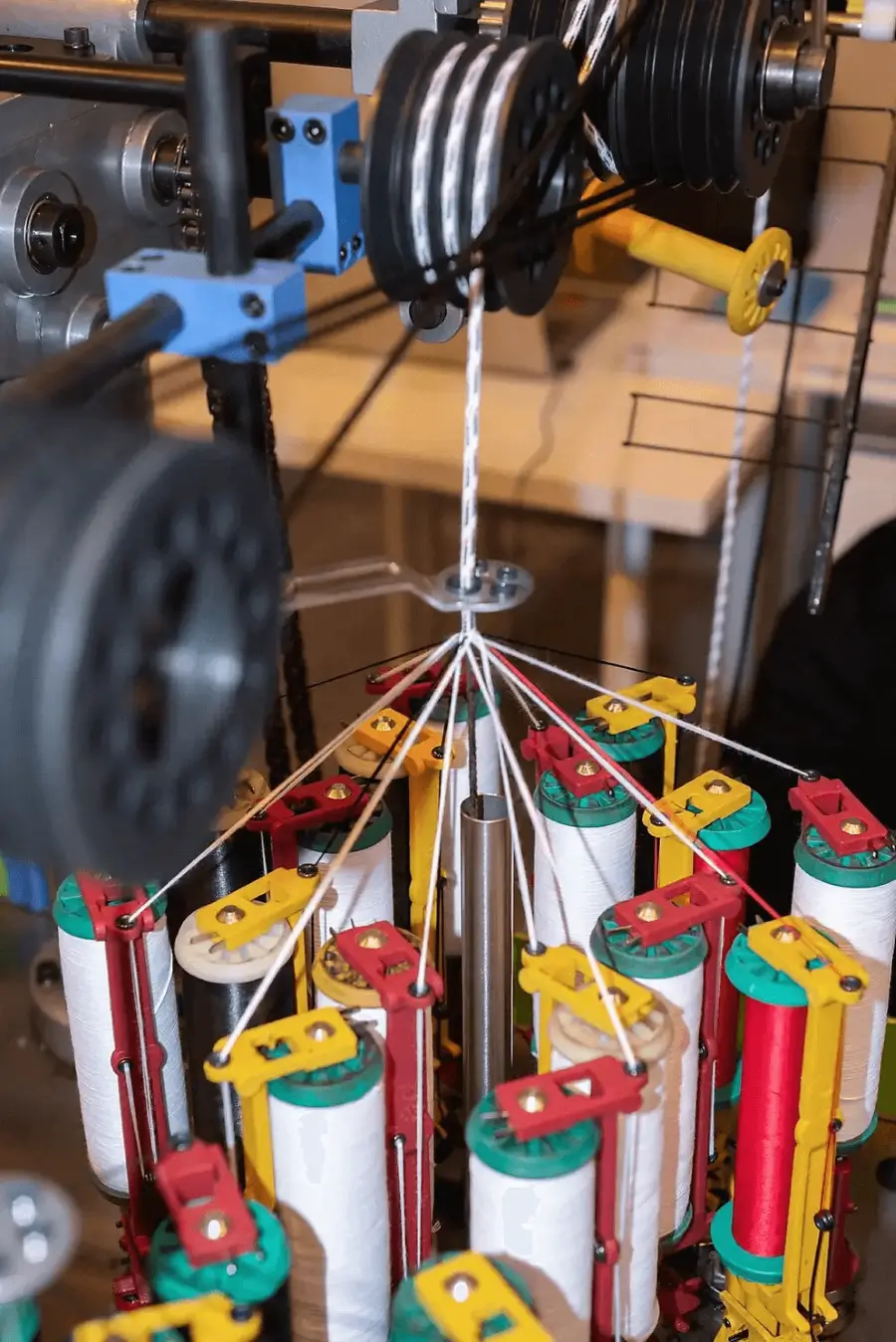Ropes are practical and widely used tools, generally categorized into synthetic ropes and wire ropes. Understanding the differences between these materials is essential when selecting the right rope. This article will guide you through the comparison of synthetic rope vs wire rope, helping both professionals and DIY enthusiasts make informed decisions.
Table of Contents
ToggleUnderstanding the Basics
Ropes are widely used tools valued for their strength, flexibility, and ease of use, making them essential in activities like climbing, maritime tasks, construction, rescue operations, and outdoor activities. The material of a rope greatly affects its performance, including safety, abrasion resistance, and strength. With advances in technology, new synthetic materials are increasingly replacing traditional natural fiber ropes and wire ropes in many applications.

What is Synthetic Rope?
Synthetic fiber rope is made by twisting or braiding various man-made fibers. The main synthetic fibers used include nylon, polyester, Polypropylene,HMPE (UHMWPE), and aramid. These ropes are widely used for their high strength, light weight, ease of handling, and chemical resistance.

What is Wire Rope?
A wire rope consists of multiple strands of steel or metal wires twisted together in a specific pattern, with the strands spirally wound around a core. Known for its exceptional wear and heat resistance (up to 1000°C), wire rope is ideal for heavy-duty operations and extreme environments, such as lifting, towing, and supporting. It is often paired with swivel joints, shackles, or hooks and is commonly used in construction, marine, mining and industrial sectors.
Let’s carefully compare HMPE synthetic rope vs steel wire rope across several key aspects to help you determine which is better suited for your uniqe need.
Material Composition
HMPE synthetic rope is made from ultra-high molecular weight polyethylene (UHMWPE), which has long chains of polyethylene molecules. This type of synthetic fiber is extremely strong and very lightweight, making it highly effective for a wide range of applications.
A wire rope is made up of multiple strands of steel or metal wires twisted together in a specific pattern, usually using high-carbon steel. it’s heavier and less flexible compared to HMPE synthetic rope.
High Strength-to-Weight Ratio:
HMPE synthetic rope has very high strength-to-weight ratio weighs than steel wire rope. HMPE rope only about 1/8 to 1/10 of steel wire rope while offering the same strength. This makes HMPE synthetic rope particularly suitable for applications that require high strength but are weight-sensitive. It not only improves your operational efficiency but also enhances safety.
On the other hand, steel wire rope is strong but much heavier and not ideal for weight-sensitive applications. It also takes more time and effort to replace and move, which can increase costs.
Safety
In extreme conditions, when an HMPE synthetic rope breaks, it releases less energy, so there’s no dangerous snapback. This greatly reduces the risk of injury or fatality during your operation, ensuring your safety.
In contrast, steel wire rope stores a lot of energy when under tension, and if it breaks, the resulting snapback can be extremely hazardous, posing a serious threat to your safety. That’s why synthetic winch rope has become a must-have replacement for steel winch rope in 4×4 off-road racing.
Corrosion Resistance
The outstanding chemical resistance of UHMWPE material ensures that it maintains stable performance in environments with acids, alkalis, and oils. Unlike steel wire ropes, UHMWPE does not rust or corrode, making it particularly well-suited for your use in harsh conditions.
But steel wire rope is prone to rust and corrosion, which can weaken it and potentially lead to safety incidents, we recommend regular maintenance and inspections. This will ensure your rope performs optimally and extends your wire rope’s lifespan, keeping your operations safe and reliable.
Flexibility and Handling
Due to the low density of HMPE synthetic rope (0.97 g/cm³), it is much lighter and easier to handle compared to heavy steel wire ropes. This not only reduces your required manpower and physical effort but also lowers your operational risks, making it widely used in emergency rescue and efficient operations.
In contrast,Steel wire rope is less flexible than HMPE rope, which can cause it to kink and bend more easily. This reduces its strength and creates safety risks. Also, its stiffness can make it harder to handle, increasing your workload and slowing down your operations.
Cost
Due to the high cost of raw materials for HMPE rope and low cost of steel, HMPE synthetic rope is significantly more expensive than steel wire rope for the same diameter and length. If your project requires a large quantity of rope, the initial investment will demand substantial financial resources. Although synthetic rope can be partially repaired and reused, unlike steel wire rope, the high upfront cost remains a significant concern for your budget-sensitive projects.
Durability
Due to the nature of its material, while HMPE synthetic rope resists abrasion and cutting, it’s more vulnerable to sharp objects and rough surfaces compared to steel wire rope. This makes it more prone to cuts and damage, which can shorten its performance and lifespan.
On the other hand, steel wire rope is highly durable due to its strong material and construction. It resists impact and wear, maintaining its integrity and performance under stress. it also means fewer replacements, saving you money in the long run
Applications
HMPE synthetic ropes are perfect for high-strength, easy-to-handle applications like marine mooring, 4×4 off-road recovery, sea rescue, fishing, tug towing, and helicopter lifting. In contrast, steel wire ropes, valued for their durability and long lifespan, are ideal for heavy-duty tasks such as construction lifting, crane operations, mining, and elevator cables, where replacement is challenging and must be infrequent.
Heat resistance
HMPE rope melts at a low temperature of 150°C, while steel wire rope can handle much higher temperatures, up to 1300°C. This means that your UHMWPE rope can melt and lose its strength when exposed to higher heat. For example, in your winch applications, the heat from the brake drum can damage the rope fibers, causing it to break. Similarly, HMPE synthetic rope isn’t suitable for high-temperature rescue situations.
But Steel wire rope’s superior heat resistance ensures stable performance in high-temperature environments, leading to a longer lifespan and cost savings, making it ideal for your high-temperature applications
Buoyancy
HMPE synthetic rope is perfect for water applications because it floats, making it easier to locate and retrieve than heavy steel wire ropes that sink. This reduces the risk of entanglement and improves safety. It’s ideal for your applications such as mooring and sea rescue, offering you better safety and practicality than steel wire ropes.
Inspection and Maintenance
Inspecting HMPE synthetic ropes is simple for you; surface issues like abrasion, cuts, or UV degradation are easily spotted with a quick visual check. Unlike steel wire ropes, HMPE ropes don’t suffer from internal corrosion or fatigue, so surface inspections are usually sufficient. Maintenance is also minimal, with no need for lubrication or coatings—just regular cleaning with mild water and storage in a cool, dry place, away from sharp objects and high temperatures.
Steel wire ropes, however, require you both visual inspections and more detailed checks for internal issues like broken wires and corrosion, often using methods like magnetic flux testing. Regular lubrication and the use of special cleaning agents are crucial to prevent rust and extend your rope’s lifespan.
FAQ
What are the types of wire rope?
There are mainly 3 types of wire rope such as stainless steel wire ropes, galvanized wire ropes and Coated wire ropes
which is better synthetic rope or steel cable for winch?
When choosing between synthetic rope and steel cable for your winch, we’ll recommend the best option based on your needs. Synthetic rope is lightweight, safe, and easy to use, perfect for quick setups and outdoor activities like 4×4 offroad recovery. It also floats and doesn’t conduct electricity.
Steel cable, however, is tougher and better suited for high-temperature environments or areas with sharp edges, ensuring durability and safety. The right winch rope not only increases efficiency but also keeps operations safe.
Conclusion
We hope this comprehensive guide has helped clarify the differences between synthetic rope and steel cable for you. After reading, you should have a better idea of when and how to choose the right type of rope for your specific needs and applications.
At Duracrodix, we provide high-performance synthetic rope solutions. If you have any questions or need further assistance, please feel free to contact us. Thank you for reading!
About The Author

Moses Xu
Hi, I’m Moses Xu, VP and Marketing Director at Duracordix. With 10+ years in high-performance synthetic ropes and netting, I specialize in export trade and marketing. Whether it’s HMPE, Kevlar, or nylon ropes, I’m happy to share insights and connect!

